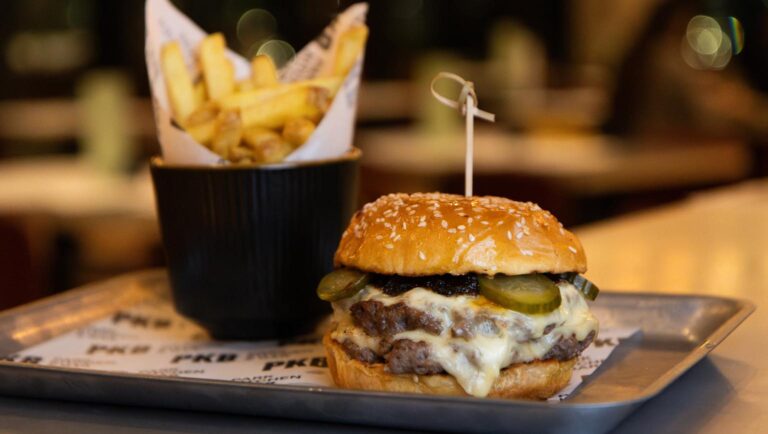
Review: Park Kitchen & Bar (PKB) at Sadler’s Wells East
A brilliantly realised menu, drawing upon many local producers, elevates this sunny all-day hangout to an essential dining destination, too
Being a creative in the capital can be hard. You need grit, determination – and you also need space you can actually afford. Our Creative Enterprise Zones are an innovative approach to cracking the conundrum of affordable creative workspace in London.
The Mayor of London, Sadiq Khan, launched the first Creative Enterprise Zones back in 2018 to work with councils and creative communities to help artists find permanent affordable space to work, provide support to new businesses and improve access to skills and employment.
Hackney Wick and Fish Island was selected as one of the very first zones, following a bid from Hackney and Tower Hamlets councils, the London Legacy Development Corporation and local stakeholders like the Cultural Interest Group. They all had a mutual desire to defend and build upon the area’s reputation for being home to a community of artists, in the face of rapid redevelopment.
The goals of our zones are to give artists access to affordable space for the long term, so they can put down roots in the heart of communities. And the good news is they are working. There are now 12 such zones across the capital, and in the next few years we will have increased new, permanent, affordable workspace by more than 71,000sqm (the equivalent of ten football pitches!).
An impact report showed that after the pandemic, our zones recovered faster and performed better than London’s wider creative economy (22% growth in the Zones versus -4% for London as a whole).
Hackney Wick and Fish Island is a great example of this success with nearly all parts of the creative industries in the zone experiencing an increase in jobs between 2018 and 2021, and businesses seeing turnover grow year-on-year. I’m delighted that the number of people working in the creative industries in Hackney Wick and Fish Island has increased by more than 60 per cent since the zone was established here.
Community ownership of buildings and workspace is an important element of this work. It helps ensure that local people and groups benefit from growth opportunities, the creation of jobs and support. It also helps local people make decisions about their areas, ensuring that the Zones are shaped by the community.
I’m delighted that The Yard Theatre is one such venue that will continue to serve the community and provide even greater impact with its ongoing redevelopment. Intended as a pop-up for a short period of time, over 13 years later it stands as a testament to the need for spaces to explore, experiment and test creative ideas and practices.
Whilst community ownership is the goal, across London the Mayor is supporting the creative community in a range of ways to help them towards affordable workspace. For example through the Creative Land Trust, a partnership between the Mayor of London, Arts Council England, Bloomberg Philanthropies and Outset Contemporary Art Fund. This is a charity which buys buildings to retain them for affordable creative workspace for the long term.
Wallis Road Studios was its first development; a mixed-use residential building, offering high quality, affordable, and sustainable studio spaces for artists and makers in the heart of Hackney Wick, ensuring that the creative community can continue to thrive in one of the capital’s cultural hotspots.
As this recent story in The Wick highlights, investment from the private sector is also very important. It’s a two-way street – when developers understand the needs of the artistic community and support them through affordable rent structures, flexible leases and mixed-use developments, there is a great opportunity for creatives to enrich those developments in the long term.
East London has long been a creative engine, with Hackney Wick at the heart of this story. As our capital’s centre of gravity moves east, the creation of East Bank in this area will be a real boost to the wider creative offering. Historically the big cultural institutions have been located in the centre or west of London, so East Bank is rebalancing that story. It’s so exciting that communities in East London will have the V&A, BBC, Sadler’s Wells, London College of Fashion and UCL on their doorsteps.
One of those reasons is that creativity doesn’t exist in a vacuum. The interplay between fashion, design, music and art is what makes London so special, and we want to encourage that. It’s hugely important that East Bank works against the grain, adding value to the existing, long-standing creative community here. I know all the East Bank partners are committed to this and excited by the collaborative and imaginative possibilities, as we see this fantastically creative corner of London grow.
Justine Simons OBE is London’s Deputy Mayor for Culture and the Creative Industries. She’s played a central role in the cultural transformation of the capital for two decades, including establishing the world’s first Creative Enterprise Zones, delivering a festival of over 5000 events during the 2012 Olympic and Paralympic Games, and now overseeing their legacy, with the ongoing development of East Bank.

A brilliantly realised menu, drawing upon many local producers, elevates this sunny all-day hangout to an essential dining destination, too
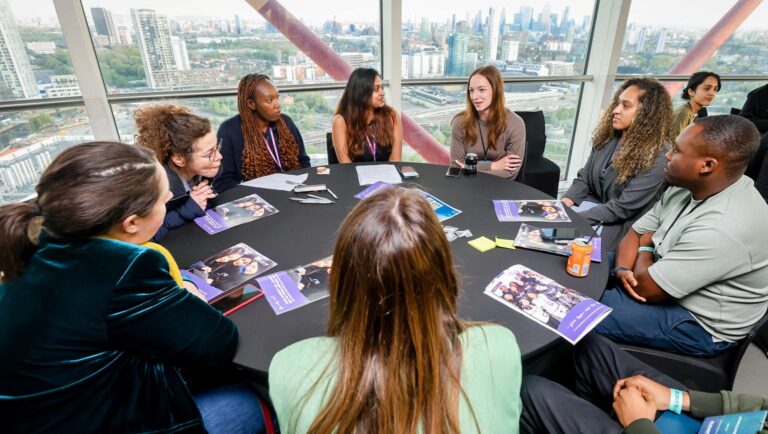
Giving local youth a meaningful voice has been key to the Olympic legacy in East London

How one local visionary kickstarted a roller-skating revolution in East London
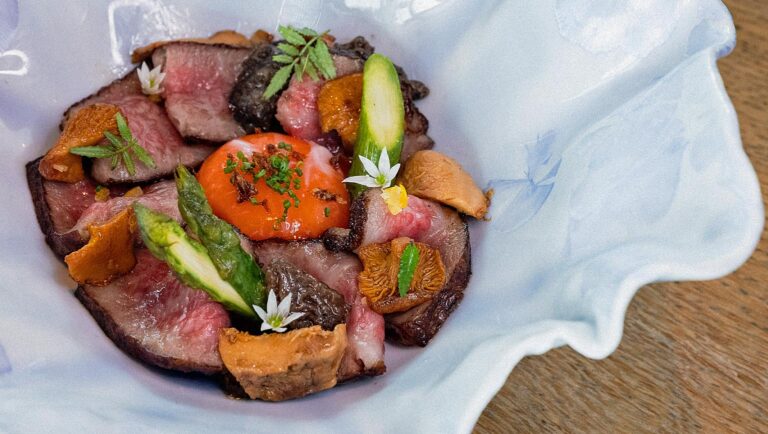
The new sushi restaurant now at the iconic skyscraper’s 7th floor and terrace
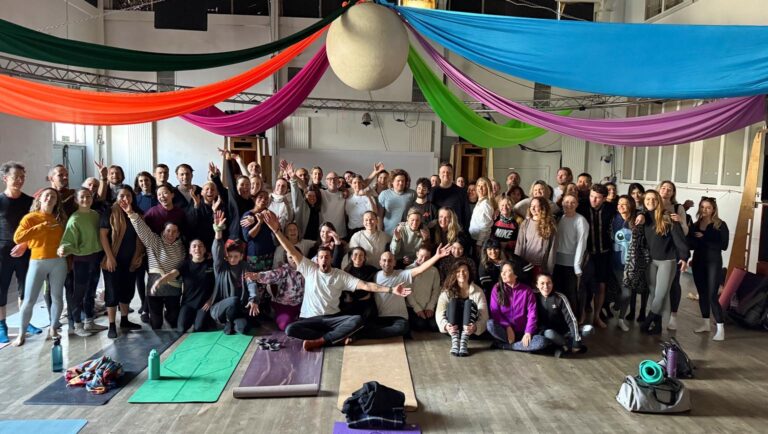
Exploring the health advantages of belonging to something bigger than ourselves
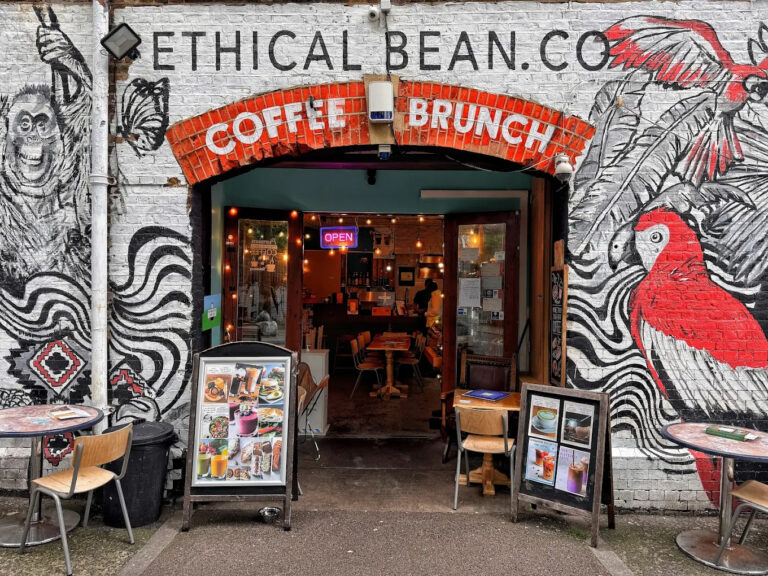
Your timely reminder to go visit these amazing restaurants, bars and cafes this summer while we wait for better bridge access…
A 160-page hardback celebration of resilience, featuring hundreds of photos, stories and memories: 15 years of culture, community and change